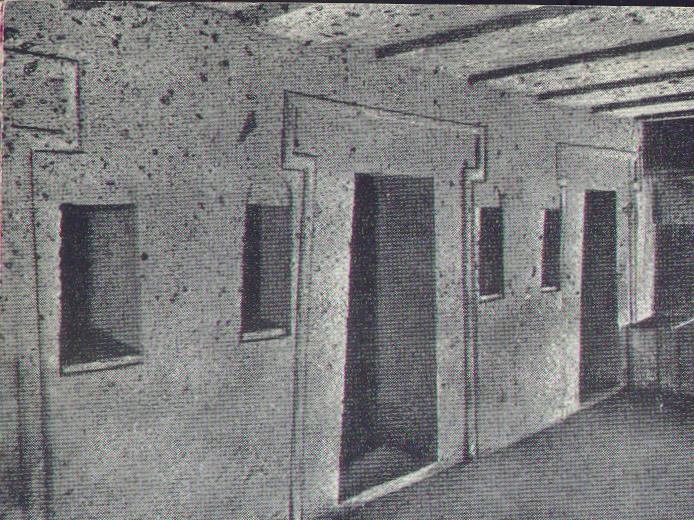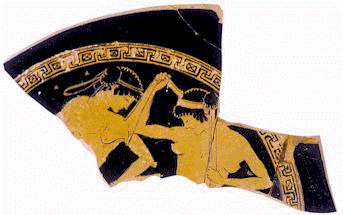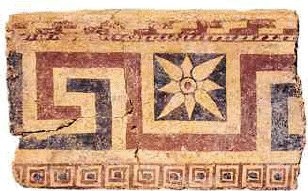
The City of CAERE*
by Tanaquil Sergius

To get a picture of Etruscan Caisra and Roman Caere, please have a walk around town! You are very welcome to do so and the inhabitants of Caere will beat your service as good as they can. A few of Caere’s most important urban features are:
I.
The
city’s fortress or arx at the
acropolis
II.
The
city’s market place or forum
III.
The
city’s main temple, the “Athr Menervas” or Templum Minervae
IV. The city’s threatre
a.
The Via
Hadis or Hades’ Road, leading to the city’s
famous necropolis
b. The Via Haruspicium or Street of the Liver soothsayers, in the vicinity of Minerva’s temple
c.
The Via
Figulorum
or Street of the Potters, in the vicinity of the market place
d.
The Via
Fulguriatorum or Street of the Lightning soothsayers, in the vicinity of
Minerva’s temple
e.
The Via
Auspicium or Street of the Bird soothsayers, in the vicinity of Minerva’s
temple
market place.


These are pictures of what your ancient Etruscan home could look like. They have been derived from old photographs of Etruscan tomb facades in Caere.
![]()
Notes:
* This section of
the information about Caere is fictional, to make this city fit in the
neighbourhoods purpose of a virtual inhabitable city. It should be pointed out
here that the archaeological data regarding the city’s inhabitation has been
quite scarce.
** The word ceramice is derived from the Greek word kerameikos, the name of the neighbourhood of the potters in ancient Athens. In Etruscan times, the bonds of the city of Caere with Greece and Athens were such, that both cities exchanged knowledge and expertise of certain fields, such as the making of ceramics. The Greeks, especially the Athenians, had a leading role in this field and the Etruscans were quite impressed by the Athenian ceramics skills. They copied a lot from the Athenians and the Corinthians, which can be seen in the famous Caeretan Hydriai. Thus, it is possible that the Caeretans, in the Etruscan era, already copied the use of locating all potters in one neighbourhood of their city, which was given the name ceramice in honor of the famous Athenian kerameikos.


This sherd and ornament were found in Caere. The sherd may have been made in Athens, the ornament may well have been made in Caere.
Go back to the original
CAERE page